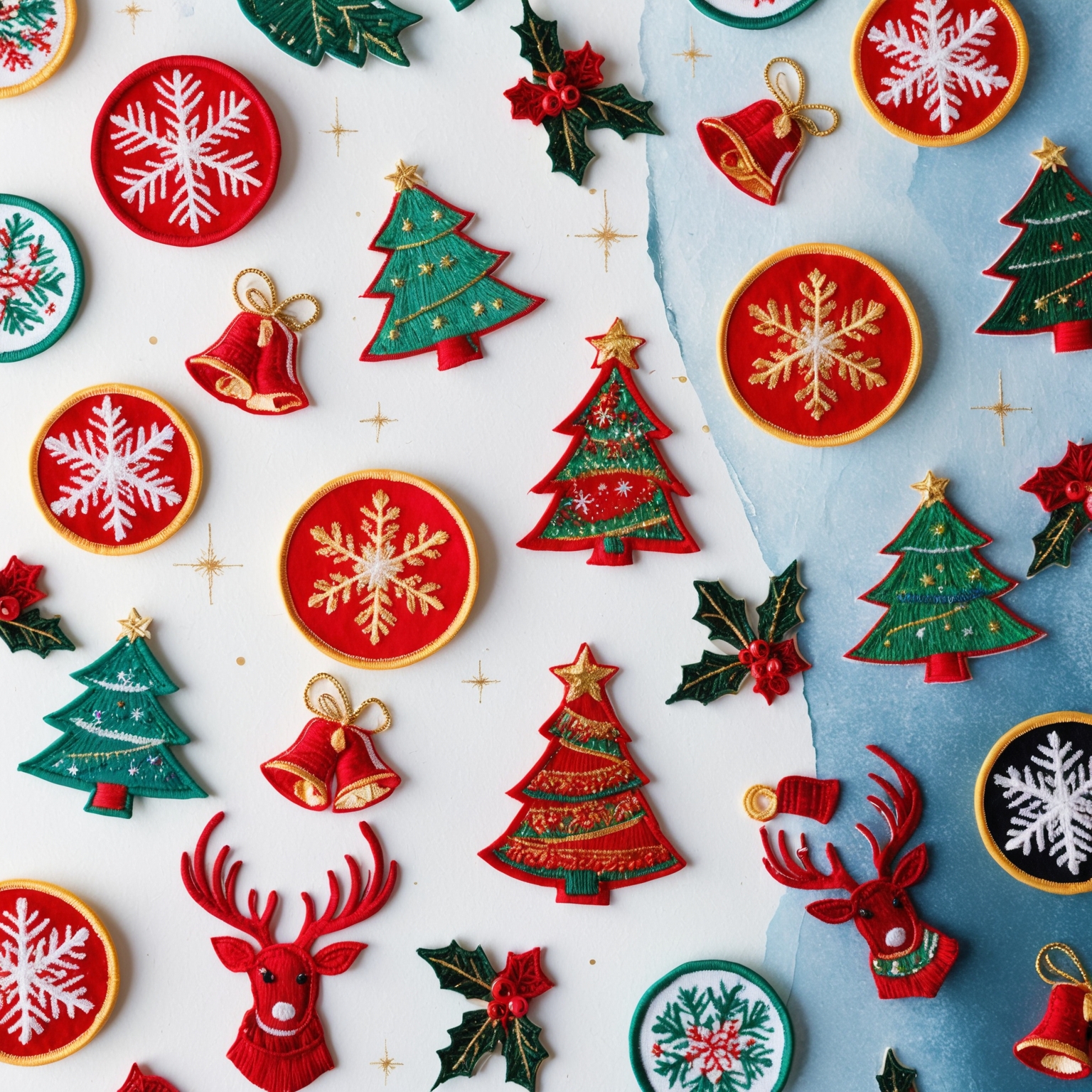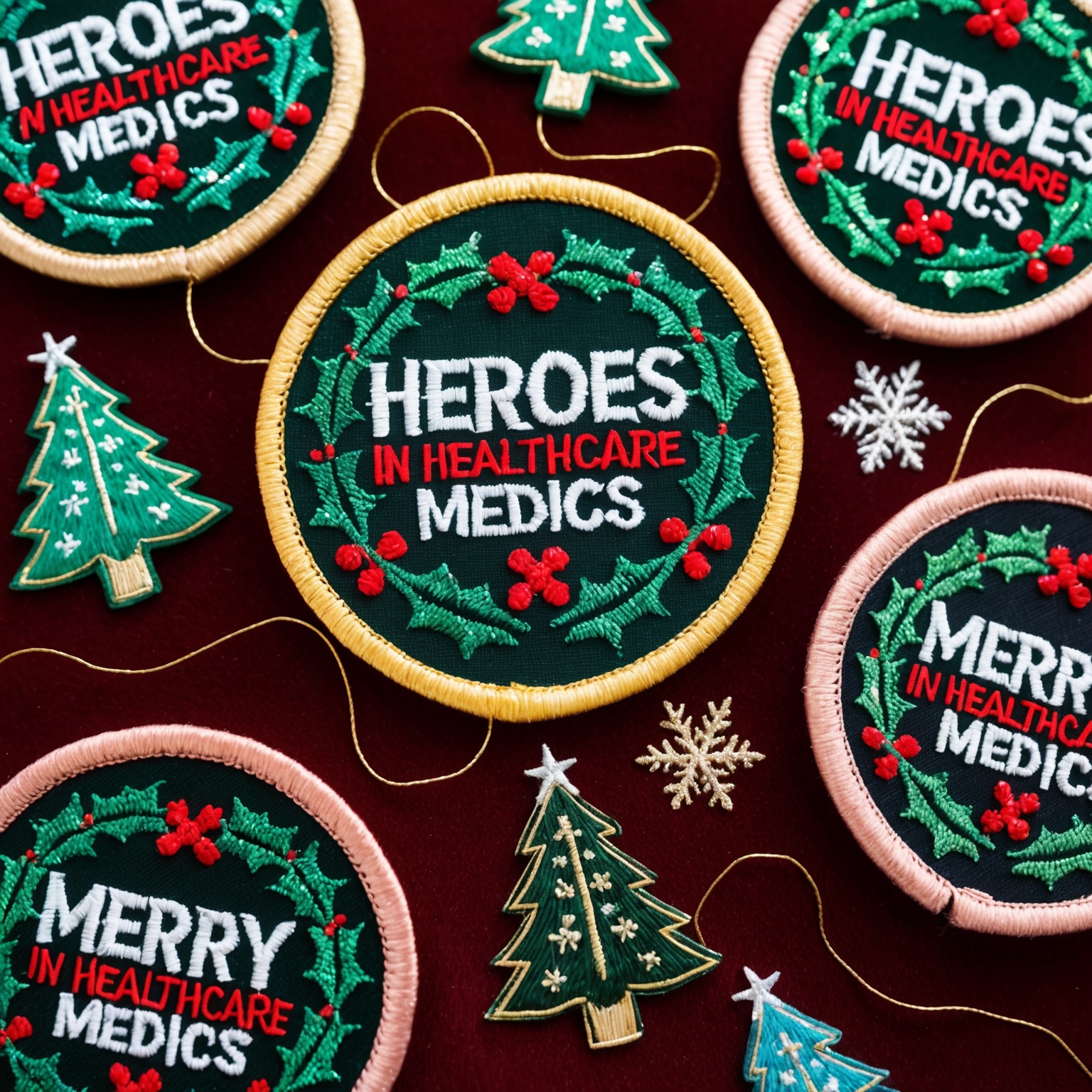Collecting scout patches is a rewarding and enjoyable hobby that offers a window into the rich history and traditions of scouting organizations worldwide. These patches, often brightly colored and intricately designed, commemorate a wide range of achievements, events, and milestones in the scouting journey. For those new to the hobby, starting a collection can seem daunting due to the vast array of patches available and the nuances involved in determining their value and authenticity. This article aims to guide novices through the process of becoming confident and knowledgeable scout patch collectors, from understanding the basics to navigating the intricacies of the hobby.
Scout patches are more than just decorative items; they are symbols of accomplishment, participation, and belonging within the scouting community. Each patch tells a story, whether it’s a merit badge earned through skill mastery, a commemorative patch from a jamboree, or a special issue from a unique scouting event. For collectors, these patches represent a tangible connection to the rich history and culture of scouting, offering insights into different eras, organizations, and scouting activities.
Starting a scout patch collection can be a fascinating journey, but it requires some foundational knowledge and a strategic approach. Understanding the different types of scout patches, their significance, and the factors that influence their value is crucial for building a meaningful and valuable collection. Additionally, knowing how to source, authenticate, and preserve these patches will enhance the collecting experience and ensure the longevity of the collection.
This article will provide a comprehensive guide for beginners interested in collecting scout patches. We will explore the various types of patches, how to start and expand a collection, and the best practices for sourcing, storing, and displaying patches. By the end of this guide, you will have the confidence and knowledge needed to embark on your journey as a scout patch collector, whether you are collecting for nostalgia, historical interest, or investment.
1. Understanding the Different Types of Scout Patches
Scout patches come in a wide variety of types, each with its own significance and criteria for collection. Understanding these types is the first step in starting a collection and appreciating the diversity within the hobby.
Merit Badges
Merit badges are one of the most recognizable types of scout patches. Awarded to scouts who demonstrate knowledge and skills in specific areas, merit badges cover a wide range of topics, from outdoor activities and sports to academic and vocational skills. Each badge features a unique design representing the subject area, making them highly collectible.
For example, a merit badge for swimming might depict a swimmer, while a badge for photography could feature a camera. Collectors often seek complete sets of merit badges from different periods or organizations, such as the Boy Scouts of America (BSA) or international scouting groups. The design and requirements for earning merit badges can change over time, making older badges particularly valuable and interesting to collectors.
Council Patches
Council patches, also known as council shoulder patches (CSPs), identify the local council to which a scout belongs. These patches are typically worn on the shoulder of the scout uniform and vary in design based on the council’s location and history. CSPs often feature local landmarks, symbols, or themes relevant to the area.
Collectors often focus on gathering CSPs from different councils, either within a specific region or from across the country. Special editions of council patches, such as those issued for anniversaries, jamborees, or other significant events, are especially sought after due to their limited availability and unique designs.
Event Patches
Event patches commemorate specific scouting events, such as jamborees, camporees, or training programs. These patches are usually issued for a limited time and are often only available to participants, making them valuable collector’s items. Event patches can feature the event’s name, date, location, and unique graphics that represent the theme or activities of the event.
For example, a jamboree patch might depict the event’s logo, while a camporee patch could feature a design related to the event’s theme, such as a compass or hiking boots. Collectors may focus on patches from major international events, like the World Scout Jamboree, or local events that have special significance to them.
Rank and Position Patches
Rank patches indicate a scout’s progress through the ranks of their scouting organization. For example, in the BSA, ranks include Scout, Tenderfoot, Second Class, First Class, Star, Life, and Eagle Scout. Each rank has its own patch, which scouts wear on their uniforms. Collectors often seek complete sets of rank patches, particularly those from different eras or scouting organizations.
Position patches, on the other hand, indicate a scout’s role or position within their troop or unit, such as Patrol Leader, Senior Patrol Leader, or Den Chief. These patches are also collectible, as they reflect the structure and leadership roles within scouting units.
Specialty and Commemorative Patches
Specialty and commemorative patches are often issued for specific purposes or to honor particular achievements. These can include patches for special awards, such as the Order of the Arrow (OA) in the BSA, which recognizes scouts who exemplify the Scout Oath and Law. Commemorative patches may also be issued for anniversaries, historical milestones, or special projects.
For example, a commemorative patch might be issued to celebrate the 100th anniversary of a scouting organization or to honor the completion of a significant service project. These patches often have unique designs and are produced in limited quantities, making them highly collectible.
2. Starting and Expanding Your Scout Patch Collection
Starting a scout patch collection requires a strategic approach, including setting goals, sourcing patches, and building your knowledge about the hobby. Here are some steps to help you get started and expand your collection over time.
Setting Goals and Focus Areas
Before you start collecting, it’s important to define your goals and focus areas. Consider what aspects of scout patches interest you the most. Do you want to collect patches from a specific scouting organization, such as the BSA or Girl Scouts? Are you interested in a particular type of patch, such as merit badges or event patches? Or do you want to focus on a specific time period, geographical region, or theme?
Setting clear goals will help you focus your collection and make informed decisions when acquiring new patches. It will also make your collection more cohesive and meaningful. For example, you might decide to collect all the merit badges issued by the BSA from the 1950s or focus on collecting CSPs from all the councils in a specific state.
Sourcing Scout Patches
Once you have defined your goals, the next step is to start sourcing patches. There are several avenues for finding scout patches, including:
- Scout Shops and Official Outlets: Many scouting organizations have official shops or online stores where you can purchase new patches. These outlets are a reliable source for current patches and official merchandise.
- Scouting Events and Swap Meets: Scouting events, such as jamborees and camporees, often include swap meets where scouts and collectors can trade or purchase patches. These events are a great way to find unique and limited-edition patches, as well as to connect with other collectors.
- Online Marketplaces: Websites like eBay, Etsy, and specialized collector forums offer a wide range of scout patches for sale. While online marketplaces can be convenient, it’s important to verify the authenticity and condition of patches before purchasing.
- Antique Shops and Estate Sales: Occasionally, scout patches can be found in antique shops, estate sales, or flea markets. These venues may offer rare or vintage patches, but they require careful inspection to ensure authenticity.
- Trading with Other Collectors: Trading is a popular way to acquire new patches and is a common practice among collectors. Building relationships with other collectors can provide opportunities to trade duplicates or acquire patches that are hard to find.
Authenticating and Evaluating Patches
As you acquire patches, it’s important to authenticate and evaluate them. Authenticity is crucial, especially for vintage and rare patches, as reproductions and fakes can sometimes be found in the market. Here are some tips for authenticating scout patches:
- Research: Familiarize yourself with the characteristics of authentic patches, including materials, stitching techniques, and design details. Reference books, online resources, and experienced collectors can provide valuable information.
- Examine the Backing: The backing of a patch can provide clues about its authenticity. For example, older patches may have a cloth backing, while newer patches might have plastic or heat-sealed backings. Understanding these differences can help identify the patch’s age and authenticity.
- Look for Official Markings: Many official scout patches include markings such as logos, copyright symbols, or specific identifying codes. These markings can help verify the authenticity of the patch.
- Condition: The condition of a patch can affect its value. Factors to consider include the quality of the stitching, the brightness of the colors, and the presence of any damage or wear. Patches in mint or near-mint condition are generally more valuable.
Building and Organizing Your Collection
As your collection grows, it’s important to organize and document your patches. Proper organization will make it easier to keep track of your collection, identify gaps, and plan future acquisitions. Here are some tips for organizing your collection:
- Categorize: Organize your patches by category, such as merit badges, CSPs, event patches, or rank patches. You can further subdivide these categories by organization, time period, or theme.
- Display: Consider how you want to display your patches. Options include albums, display cases, shadow boxes, or framed displays. Choose a method that protects your patches from damage while allowing you to enjoy and showcase them.
- Document: Keep a record of your collection, including details such as the patch’s type, origin, date acquired, and any relevant history. This documentation can be kept in a physical binder or digitally. Detailed records are valuable for insurance purposes, future trading, or selling.
3. Best Practices for Sourcing, Storing, and Displaying Scout Patches
To ensure the longevity and preservation of your scout patch collection, it’s important to follow best practices for sourcing, storing, and displaying patches. Proper care will protect your patches from damage and maintain their value over time.
Sourcing Patches Responsibly
When sourcing patches, especially from online marketplaces or informal settings, it’s important to exercise caution. Be wary of reproductions or counterfeit patches, and take steps to verify the authenticity of any patches you consider purchasing. Here are some tips for responsible sourcing:
- Buy from Reputable Sellers: When purchasing from online marketplaces, choose sellers with good reputations and positive reviews. Established sellers are more likely to offer authentic patches and provide accurate descriptions.
- Ask Questions: Don’t hesitate to ask sellers questions about the patch’s history, condition, and authenticity. A reputable seller should be willing to provide detailed information and additional photos if needed.
- Inspect the Patch: If possible, inspect the patch in person before purchasing. Check for signs of wear, damage, or alterations that could affect its value. For vintage patches, be mindful of common issues such as fading, fraying, or missing stitching.
Proper Storage Techniques
Proper storage is essential to protect your scout patches from environmental damage, such as moisture, light, and temperature fluctuations. Here are some storage tips to keep your patches in good condition:
- Use Acid-Free Materials: Store patches in acid-free materials, such as archival-quality albums, sleeves, or boxes. Acid-free materials prevent discoloration and deterioration caused by acidic substances.
- Avoid Direct Sunlight: Exposure to direct sunlight can cause colors to fade and weaken the fabric. Store patches in a cool, dry place away from direct light sources.
- Control Temperature and Humidity: Fluctuations in temperature and humidity can damage fabric and stitching. Store patches in a stable environment with moderate temperature and humidity levels.
- Avoid Adhesive Backings: If storing patches in albums or display cases, avoid using adhesives that could damage the fabric. Instead, use clear plastic sleeves or pockets designed for patches.
Displaying Your Collection
Displaying your scout patch collection allows you to showcase your favorite pieces and share them with others. However, it’s important to balance aesthetics with preservation. Here are some display options and tips:
- Shadow Boxes: Shadow boxes are an excellent way to display patches while protecting them from dust and damage. You can create themed displays based on categories or specific events.
- Framed Displays: Framing patches is a popular way to display them as art. Use UV-protective glass to minimize the risk of fading and ensure that the patches are not in direct contact with the glass.
- Display Cases: Display cases with glass fronts provide a secure and visually appealing way to showcase your collection. Choose cases with adjustable shelves to accommodate patches of different sizes.
- Rotating Displays: To prevent prolonged exposure to light and other environmental factors, consider rotating the patches you display. This approach allows you to showcase different parts of your collection while minimizing the risk of damage.
Documentation and Record-Keeping
Maintaining detailed records of your collection is crucial for organization, insurance, and potential future transactions. Here are some tips for effective documentation:
- Catalog Your Patches: Create a catalog of your patches, including information such as the patch type, organization, date acquired, condition, and any unique features or history. You can use a physical notebook, a digital spreadsheet, or specialized collection management software.
- Photograph Your Patches: Take high-quality photographs of each patch in your collection. Include close-ups of important details, such as text or symbols. Photographs can be helpful for identification, insurance claims, and sharing your collection with others.
- Update Records Regularly: As you acquire new patches or make changes to your collection, update your records promptly. Keeping your documentation up to date will make it easier to manage your collection and track its value.
4. Connecting with the Scout Patch Collecting Community
One of the most rewarding aspects of collecting scout patches is connecting with others who share your passion. The scout patch collecting community is vibrant and diverse, offering opportunities for learning, trading, and socializing. Here are some ways to connect with fellow collectors and enrich your collecting experience.
Joining Collector Groups and Organizations
There are numerous organizations and groups dedicated to scout patch collecting. These groups often host events, publish newsletters, and provide resources for collectors. Joining a collector group can provide access to valuable information, exclusive patches, and networking opportunities.
For example, the International Scouting Collectors Association (ISCA) is a prominent organization that connects collectors of scout memorabilia worldwide. Membership in such organizations can provide access to exclusive publications, conventions, and online forums.
Attending Patch Trading Events and Conventions
Patch trading events and conventions are excellent opportunities to meet other collectors, trade patches, and expand your collection. These events often feature vendors, auctions, and workshops on topics related to patch collecting. Whether you’re looking for a specific patch or just want to browse, these events can be a fun and educational experience.
Major scouting events, such as national or international jamborees, often include patch trading as a popular activity. These events attract collectors from around the world, offering a unique opportunity to acquire rare or international patches.
Participating in Online Communities
Online communities, such as forums, social media groups, and websites, are valuable resources for scout patch collectors. These platforms allow collectors to share knowledge, ask questions, and trade patches with others. Participating in online communities can help you stay informed about the latest trends, events, and resources in the hobby.
Websites like PatchTrader.com and forums like the ISCA website offer platforms for buying, selling, and trading patches. Social media groups on platforms like Facebook can also provide a space for discussions, advice, and showcasing collections.
Building Relationships and Networking
Building relationships with other collectors is an essential part of the hobby. Networking can lead to new opportunities for trading, learning, and acquiring patches. Don’t hesitate to reach out to other collectors, ask for advice, and share your knowledge. The patch collecting community is generally welcoming and supportive, and building connections can enhance your collecting experience.
Conclusion
Collecting scout patches is a rewarding hobby that offers a unique blend of history, artistry, and community. Whether you’re drawn to the vibrant designs, the stories behind each patch, or the challenge of finding rare items, the world of scout patch collecting has something to offer everyone. By understanding the different types of patches, setting clear goals, sourcing patches responsibly, and following best practices for storage and display, you can build a meaningful and valuable collection.
As you delve into the hobby, remember that collecting is not just about acquiring patches but also about connecting with others who share your passion. Engaging with the scout patch collecting community, participating in events, and building relationships with fellow collectors can greatly enrich your experience and deepen your appreciation for the hobby.
Whether you’re a novice just starting or an experienced collector looking to expand your collection, this guide provides the foundation and confidence you need to embark on your scout patch collecting journey. With curiosity, dedication, and a love for scouting history, you can create a collection that not only brings you joy but also preserves and honors the legacy of scouting for future generations.
If you are interested in purchasing high-quality custom patches, feel free to call us at 1-866-903-4903 or fill out one of our FREE quotes here.




